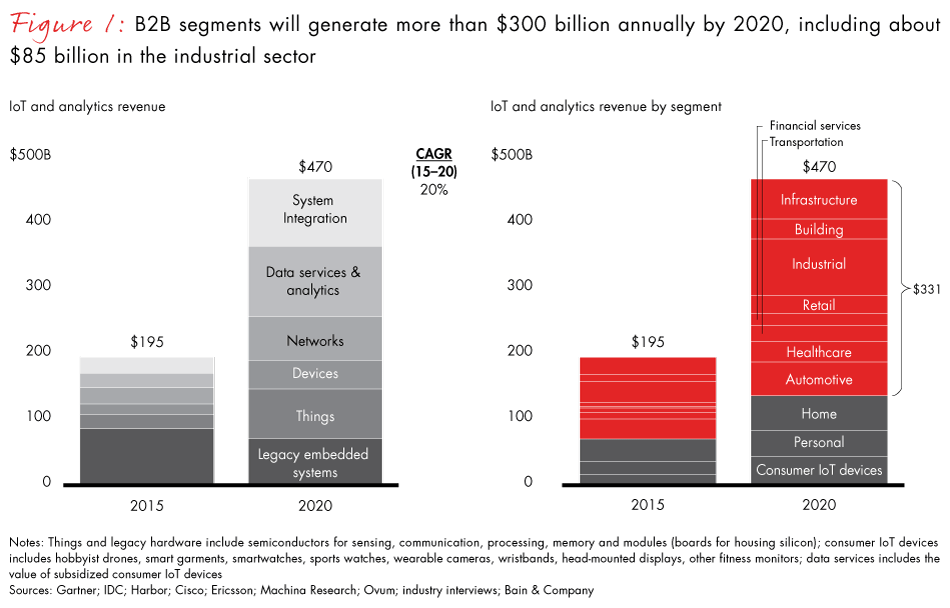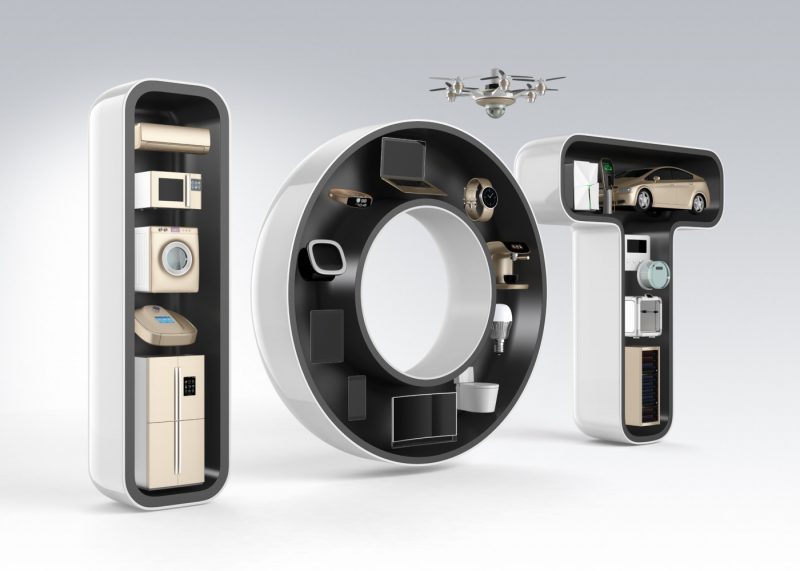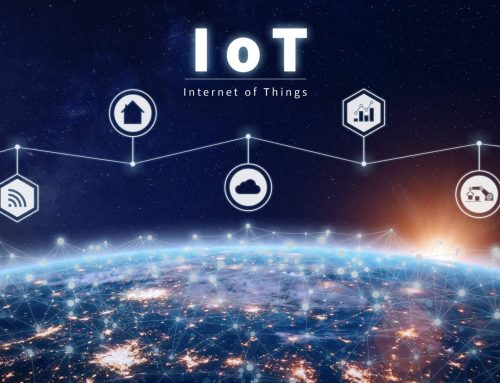The rapidly falling costs of sensors and cloud-based storage have more than a few B2B industrial companies wondering if it’s time to add sensors to their products, thereby opening new data (and revenue) streams.
IoT is, of course, big business. Discrete Manufacturing, Transportation and Logistics, and Utilities will lead all industries in IoT spending by 2020, averaging $40B each and Bain predicts B2B IoT segments will generate more than $300B annually by 2020, including about $85B in the industrial sector.
Which may be why I’m sensing a growing level of uneasiness over IoT strategies within the ranks of privately owned middle market companies (assuming those strategies exist at all).

And who can blame them for eyeballing a piece of that considerable pie, particularly when faced with the incessant pressure to generate investor returns? Add some sensors, capture the data and, lo and behold, a new revenue stream is born, right?
Maybe.
The potential of IoT
Given the industry’s mounting interest in IoT and having personally worked with major public and middle market industrials on IoT projects, let me share some insights into the potential promise – and peril – of adding IoT to your product portfolio.
As a leadership team, there are some basic questions you’ll need to ask before adding IoT to your books, because it will change your cost structures. You can count on it (pun intended). You may also encounter some surprises related to whether and how your new IoT device will connect to the cloud.
For discussion’s sake, let’s assume you manufacture a mechanical device that works within a larger device. Moreover, your device is critical to the performance of that larger device (for example a pump or an electric motor or a press die or a gearbox).
Understandably, you believe that by sensing what is happening at the level of your device, you can use that newfound knowledge to improve on its performance and, by extension, the performance of the larger device as well.
Now, you have the concept of an IoT-enabled version of your product. This new and IoT-improved product can adapt to local conditions and deliver an improved performance.
At its core, this is a critical thought experiment based on your deep knowledge of your product and the system within which it works. And the costs involved are little more than time – and it is something you can test.
Recognize that costs are a given
Assuming you’ve opted to move forward, recognize you’ve now added sensors, electronics, and software to your product. We’ll illustrate it as such:

The implications of this simple graphic are profound.
- You’ve added costs of new components
- You’ve added new engineering capabilities requiring control and alignment
- You’ve added new recurring cost streams for software maintenance and upgrades
- You’ve added new recurring costs for software support
In other words, the addition of that IoT device has impacted your cost structure in profound ways. Which, naturally, begs an important question: Have you also added value to your customer and generated additional margin?
Connect to the Cloud
Let’s also assume you’re going to connect your device to the cloud, enabling you to capture and analyse data, perform remote updates, and so on. Our illustration – not to mention our effort – grows in both scope and scale.

At this juncture I find it useful to work through the communications with the device as if it was a business process. Each step is considered in detail and poses some useful questions, including:
- What are the data transmission costs?
- What are the data storage costs?
- What are the costs of making sense of the data?
- What rights do you have to the data coming from your device?
- What rights of access do you have to your device – who controls the transmission?
Let your answers guide you
What I’ve offered here is based on first-person experience working IoT projects with major and mid market manufacturers. I understand the lure of IoT, its data-driven promises of product improvement and enhanced revenues.
Yes, there is enormous potential in developing any product range with IoT capabilities. And there are definite costs associated with them.
The key, then, is to take the time to consider the implications of any new IoT product, thereby allowing the leadership team to build a meaningful case for – and, in some cases, against – IoT.





